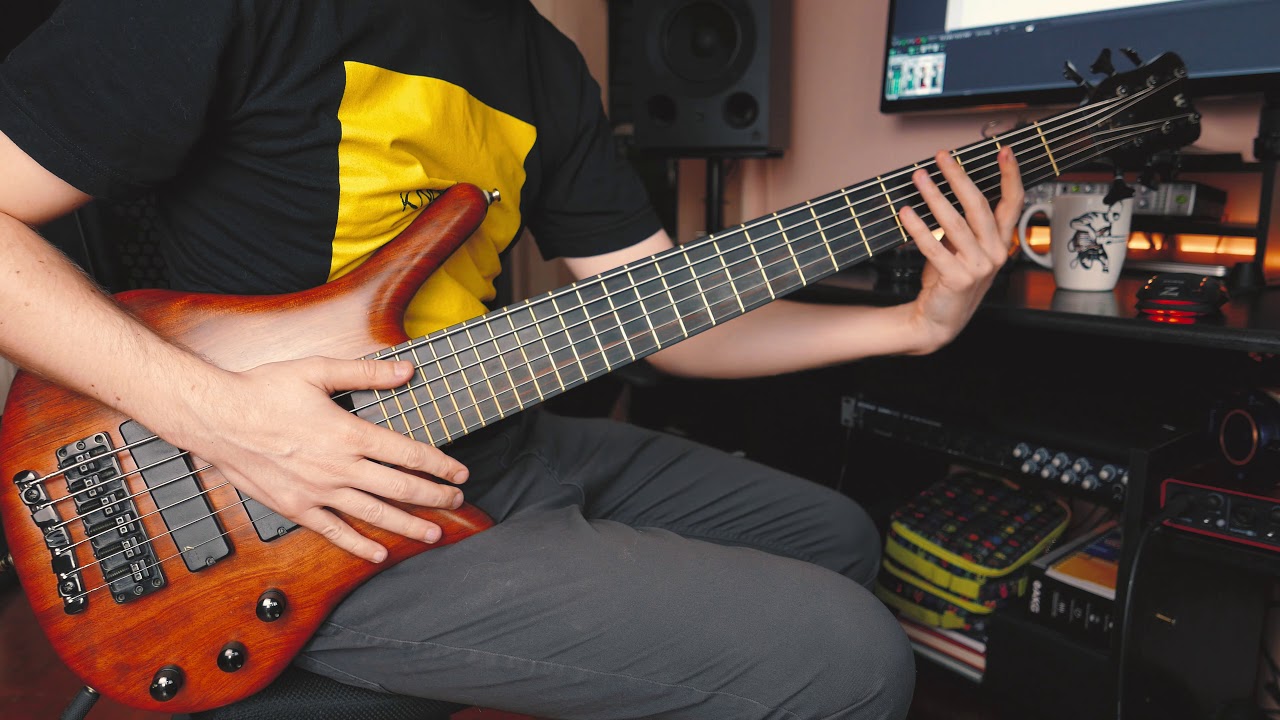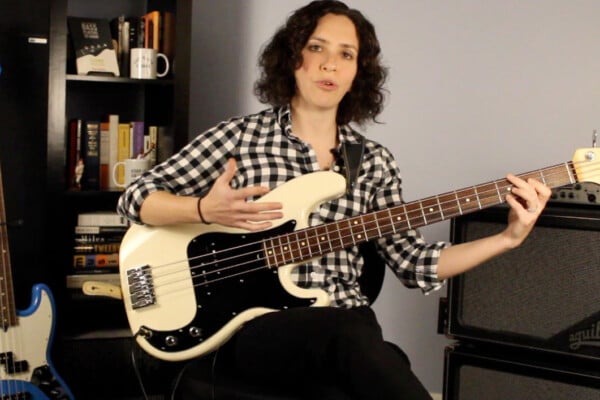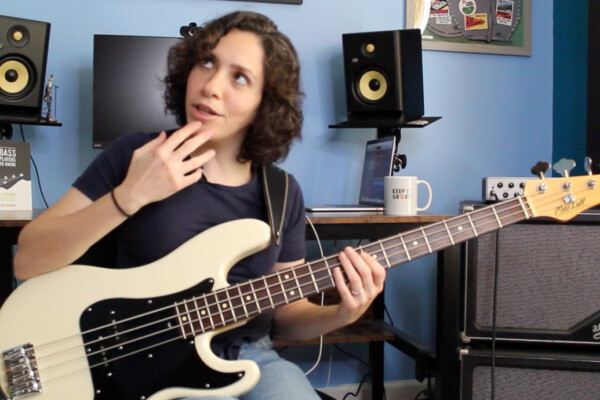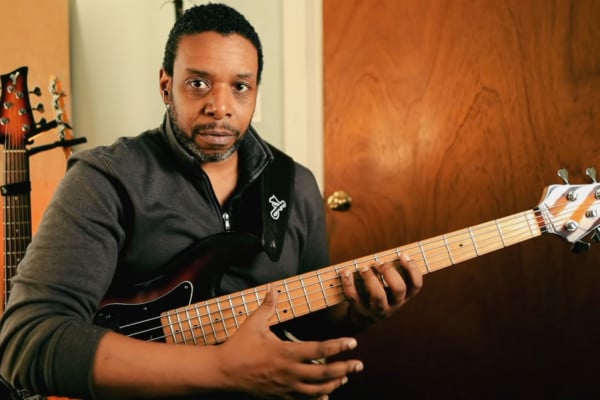Dealing with “String Ring” While Slapping

Q: I know that you’ve mentioned that you don’t slap but your right-hand technique is similar enough that I wanted to ask this. I got a 6-string not too long ago and I’ve been having a hard time with string ring. It happens when I play fingerstyle, too but it’s especially bad when I slap. Is there anything I can do about that? Should I just not play 6 when I have/want to slap?
A: Well, there are certainly some players out there that can slap well on a 6. Les Claypool, Alain Caron, Henrik Linder, and Adam Nitti come to mind immediately, and I’m sure that there are a ton more.
My biggest issue with slapping on a 6 is that it just has a different sound than a 4, to my ears, but it depends on what you’re going for (maybe because of wood density? I feel the same way about fingerstyle playing. There’s a certain thing that 4’s and 5’s have that I’ve never been able to cop on a 6. It’s a different instrument that performs a different function for me). I don’t think you could ever get that “Marcus sound” or “Victor sound” slapping on a 6 but there are a lot of functional sounds outside of that, so it’s a moot point here as you didn’t mention anything about tone.
I imagine that it’s much the same for slap players as it is for me when dealing with ringing strings inasmuch as it’s usually a combination of both hands dealing with any necessary string muting. Much depends on what and how exactly I am playing but I’ll often use a combination of fretting hand fingers to touch and dampen strings as well as various fingers or parts of my fretting hand depending on string position.
With the fretting hand, it’s easy enough to play a note with your index finger (for example) and drop your pinky or another finger down to touch any given string. Not as easy, though, if you are fretting on the G string and your B is ringing, and especially not if in the context of a busy line that’s moving around a bunch. There may just be too much going on, depending on the context, so it’s a good idea to practice plucking hand muting techniques.
If you’re slapping, I imagine that your plucking hand wrist is just about parallel with the fretboard and you are hammering down with your thumb, playing on the side of the knuckle, or thereabouts. This means that your palm or even wrist are right there by your lowest strings (I’m assuming it’s a B string ringing much of the time if you’re slapping on a 6. Those low strings like to start rumbling if left unchecked). Sometimes, it can be as simple as just dropping your palm down onto the strings for a second.
Of course, there are also things like hair bands or Gruv Gear Fret Wraps that deal with string ring on a constant basis, but I’m a big fan of learning how to produce and control the sound you want (or don’t want) with your hands before just going for the quick fix and using a gizmo of some sort. I do sometimes use Fret Wraps in the studio to be extra sure my B string doesn’t start ringing, depending on what I’m playing. I keep one in my studio “go-bag” along with my DI, tuner, preferred headphones, tools, extra cables, etc…
There is a myriad of ways to mute notes or an open string that’s ringing but much will depend on what you’re playing and what position your hands are in. My advice would be to practice the various and sundry ways to get a muted sound in order to build some muting muscle memory as well as exploring that sound.
Some examples:
Fretting Hand:
- Rocco style where you may fret the note with your index finger while also lightly laying your other fretting fingers across the strings, thereby killing vibrations as you play.
- Staccato articulations resulting from fretting a note and very quickly lifting your finger enough to kill the vibration (not so much that you accidentally pull-off the string and set the open string to ringing, though. Just enough to kill the note)
Plucking Hand:
- Palm muting. Resting the palm of your hand directly on the strings as you play. This works best if you rest the palm way back by the bridge. Too far forward and you won’t get any sound.
- Pinky mute. I haven’t seen too many players doing this but I often use my pinky as an anchor when plucking with my thumb and if I anchor on a string (as opposed to the bridge), I get a nice muted sound. You can also grab on to the string a bit with the pinky and lean the hand forward which serves to mute two strings at once (think of hooking your pinky around the string and mute the next higher string with the pinky knuckle).
- You can also trail your pinky on the string behind your plucking fingers and mute the string. This is a more subtle muted sound.
- when slapping, practice playing lines slowly and using your palm or wrist to lightly touch down on the string and mute notes.
Experiment with what works given your hand position, the way you play, the sound you want, and the ergonomics of your set up.
How do you No Treble readers deal with string-ring? Please share your thoughts in the comments.
Have a question for Damian Erskine? Send it to [email protected]. Check out Damian’s instructional books, Right Hand Drive and The Improviser’s Path.



